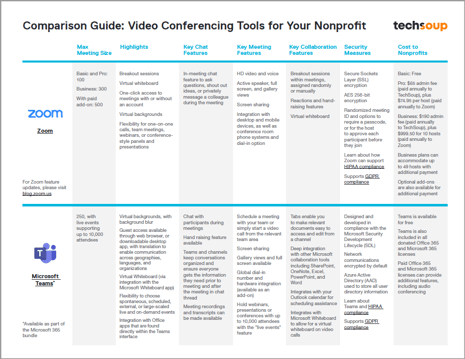Video conferencing tools are essential for remote work. They help teams communicate effectively.
Choosing the right tool can be challenging with so many options available. Comparing video conferencing tools can save time and money. It helps you find the best fit for your needs. Whether you need a tool for small meetings or large webinars, a comparison can highlight key features and differences.
This guide will help you understand what each tool offers. By the end, you will have a clearer idea of which video conferencing tool suits your requirements. So, let’s dive into the world of video conferencing tools and explore their features, usability, and pricing. This will help you make an informed decision.
Zoom
Zoom has become a popular choice for video conferencing. It is known for its user-friendly interface and reliable performance. Let’s dive into its key features, pros and cons, and pricing.
Key Features
- HD Video and Audio: Zoom offers high-definition video and audio quality.
- Screen Sharing: Share your screen easily with other participants.
- Breakout Rooms: Split your meeting into smaller groups for focused discussions.
- Virtual Backgrounds: Use custom backgrounds during meetings.
- Recording: Record meetings and save them for later use.
- Chat: Use the chat function to send messages to participants.
Pros And Cons
| Pros | Cons |
|---|---|
| Easy to use | Security concerns |
| Reliable performance | Time limits on free plan |
| Wide range of features | Requires good internet connection |
Pricing
- Basic Plan: Free with 40-minute limit on group meetings.
- Pro Plan: $14.99 per month per host. Includes longer meeting durations.
- Business Plan: $19.99 per month per host. Adds advanced features.
- Enterprise Plan: Custom pricing for large organizations.

Credit: blog.techsoup.org
Microsoft Teams
Microsoft Teams is one of the leading video conferencing tools today. It integrates smoothly with other Microsoft Office applications, making it a popular choice for businesses. With its user-friendly interface, Teams is suitable for both small and large groups. It supports various features that enhance communication and collaboration.
Curious about Collaboration? This post offers a deeper understanding. Best Team Collaboration Tools for Remote Work: Boost Productivity
Key Features
- Integration with Office 365: Connects seamlessly with other Office apps.
- Chat Functionality: Allows users to chat before, during, and after meetings.
- File Sharing: Share files directly within the Teams environment.
- Calendar Integration: Syncs with Outlook Calendar for easy scheduling.
- Background Effects: Blur background or use custom images.
- Breakout Rooms: Split meetings into smaller groups.
Pros And Cons
| Pros | Cons |
|---|---|
| Easy integration with Microsoft Office apps. | Can be overwhelming for new users. |
| High-quality video and audio. | Requires a strong internet connection. |
| Supports large meetings up to 10,000 attendees. | Limited features on the free plan. |
| Secure with data encryption. | Some features require additional subscriptions. |
Pricing
Microsoft Teams offers several pricing tiers to suit different needs:
- Free Plan: Basic features with limitations.
- Microsoft 365 Business Basic: $5 per user/month. Includes meetings up to 300 participants and 1 TB of OneDrive storage.
- Microsoft 365 Business Standard: $12.50 per user/month. Adds desktop versions of Office apps, and more.
- Office 365 E3: $20 per user/month. Advanced security and compliance features.
Google Meet
Google Meet is a popular video conferencing tool. It is a part of Google Workspace. Many businesses and schools use it for meetings and classes. It is known for its simple interface and integration with other Google services.
Key Features
Google Meet offers many features. Here are some of the key ones:
- HD Video and Audio: Ensure clear communication with high-quality video and sound.
- Screen Sharing: Share your screen with others easily during meetings.
- Recording: Record meetings for future reference.
- Live Captions: Get real-time captions for better accessibility.
- Integration with Google Apps: Seamlessly integrates with Google Calendar, Gmail, and more.
- Up to 100 Participants: Host large meetings with up to 100 attendees.
- Join via Link: Easily join meetings through a shared link.
Pros And Cons
Google Meet has its strengths and weaknesses:
| Pros | Cons |
|---|---|
|
|
Want to know more about Collaboration? Check out this article for helpful insights. How to Improve Communication With Collaboration Software: Best Tips
Pricing
Google Meet offers different pricing plans. Here’s a breakdown:
- Free: Up to 100 participants, 60-minute meetings.
- Google Workspace Essentials: $8 per active user/month. Includes advanced features and support.
- Google Workspace Enterprise: Custom pricing. Includes enterprise-grade features and support.
Cisco Webex
Cisco Webex is a popular video conferencing tool used by many organizations. It offers a wide range of features tailored to suit both small teams and large enterprises. Let’s explore its functionalities in detail.
Key Features
- HD Video and Audio: Enjoy high-quality video and crystal-clear audio during meetings.
- Screen Sharing: Share your screen easily with other participants.
- Meeting Recording: Record meetings for future reference.
- Virtual Backgrounds: Customize your background during video calls.
- Integration: Seamlessly integrates with tools like Microsoft 365 and Google Workspace.
- Security: Offers end-to-end encryption for secure communications.
Pros And Cons
| Pros | Cons |
|---|---|
| Easy to use interface | Higher cost compared to some competitors |
| Reliable performance | Requires strong internet connection |
| Excellent customer support | Some users find the setup complex |
| High security standards | Occasional audio lag |
Pricing
- Free Plan: Basic features for small teams, limited to 50 minutes per meeting.
- Starter Plan: $13.50 per host/month, suitable for small teams with advanced features.
- Business Plan: $26.95 per host/month, ideal for small to medium-sized businesses.
- Enterprise Plan: Custom pricing for large organizations with tailored solutions.
Skype
Skype is one of the most well-known video conferencing tools. Launched in 2003, it has grown to become a popular choice for personal and business communication. It offers a range of features that make it suitable for various uses. Let’s take a closer look at what Skype has to offer.
Key Features
- Video and Audio Calls: High-quality video and audio calls for one-on-one or group meetings.
- Screen Sharing: Share your screen with others during a call.
- Instant Messaging: Send text messages, files, and images instantly.
- Call Recording: Record calls for future reference.
- Live Subtitles: Real-time subtitles during calls.
Curious about Collaboration? This post offers a deeper understanding. Free Collaboration Tools for Small Teams: Boost Productivity Today
Pros And Cons
| Pros | Cons |
|---|---|
| Easy to use | Requires internet connection |
| Available on multiple devices | Occasional call drops |
| Free for personal use | Limited features in free version |
| Integration with Microsoft Office | May have security concerns |
Pricing
Skype offers both free and paid plans. The free plan is suitable for personal use, allowing basic features like video calls and messaging. For business use, there is the Skype for Business plan. This plan offers advanced features and is part of the Microsoft Office 365 suite.
- Free Plan: Basic features, suitable for personal use.
- Skype for Business: Advanced features, integrated with Office 365. Pricing starts at $5 per user per month.
Criteria For Evaluation
Choosing the right video conferencing tool involves evaluating several key factors. This ensures that the chosen tool not only meets your needs but also provides a seamless experience. Below, we will explore important criteria to consider.
User Interface
A user-friendly interface is crucial. Users should easily navigate through the features. An intuitive design minimizes the learning curve and boosts productivity. Look for tools with clean layouts and simple menus. This helps even non-technical users to operate without hassle.
Security
Security is vital for protecting sensitive data during video calls. Check for features like end-to-end encryption. This ensures that data remains confidential. Also, consider tools that offer password-protected meetings and two-factor authentication. These features add extra layers of security.
Integration Options
The ability to integrate with other software enhances functionality. Tools that integrate with calendars, email clients, and project management software are beneficial. This helps in streamlining workflows. Look for compatibility with popular platforms like Google Workspace and Microsoft Office.
Customer Support
Reliable customer support can save time and prevent frustration. Consider tools that offer 24/7 support through multiple channels. These can include live chat, email, and phone support. Check if they provide a knowledge base or community forums. These resources can be helpful for troubleshooting common issues.
| Criteria | Importance | Key Features |
|---|---|---|
| User Interface | High | Intuitive design, easy navigation |
| Security | Critical | End-to-end encryption, password protection |
| Integration Options | Medium | Compatibility with calendars, email, project tools |
| Customer Support | High | 24/7 support, multiple channels |
Frequently Asked Questions
What Are The Top Video Conferencing Tools?
Top video conferencing tools include Zoom, Microsoft Teams, Google Meet, and Cisco Webex. Each offers unique features and functionalities. These tools are popular for their reliability, ease of use, and integration capabilities.
How Does Zoom Compare To Google Meet?
Zoom offers more advanced features like breakout rooms and virtual backgrounds. Google Meet integrates seamlessly with Google Workspace. Both provide high-quality video and audio, but Zoom is often preferred for larger meetings.
Which Video Conferencing Tool Is Best For Large Meetings?
For large meetings, Zoom and Microsoft Teams are highly recommended. They support a higher number of participants and provide robust management features. Both tools offer reliable performance and extensive collaboration options.
Are Video Conferencing Tools Secure?
Most modern video conferencing tools have strong security measures. Encryption, password protection, and waiting rooms are common features. Always check the specific security features of the tool you choose.
Conclusion
Choosing the right video conferencing tool can transform your communication. Each tool offers unique features. Consider your needs and budget. Test different options to find the best fit. Remember, user experience matters most. Prioritize ease of use and reliability. Keep exploring new tools as technology evolves.
Stay connected and make informed decisions. Happy conferencing!










